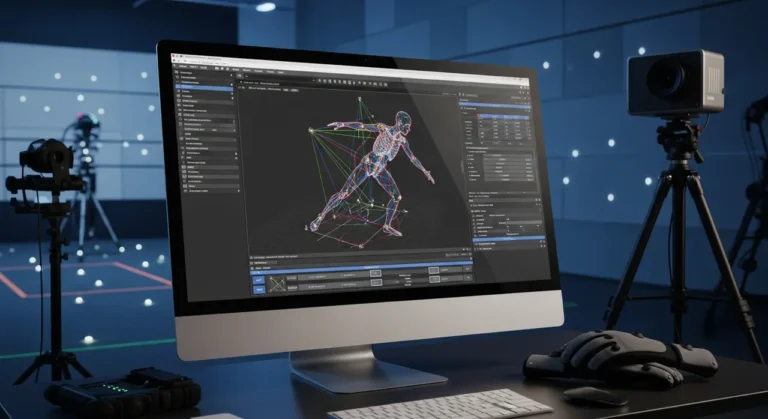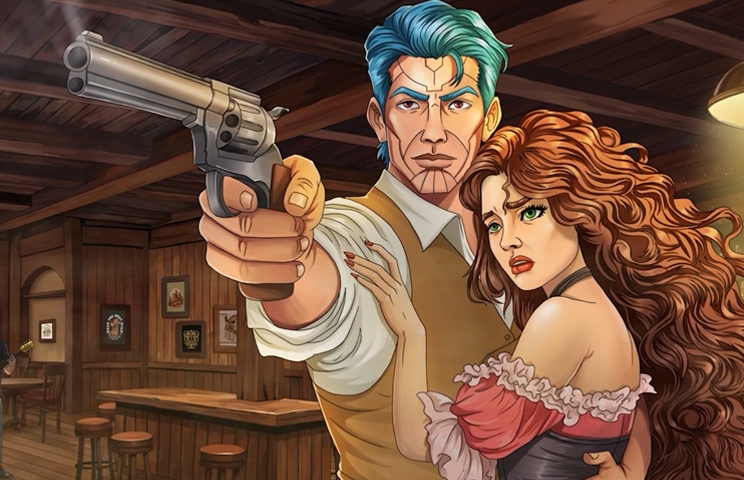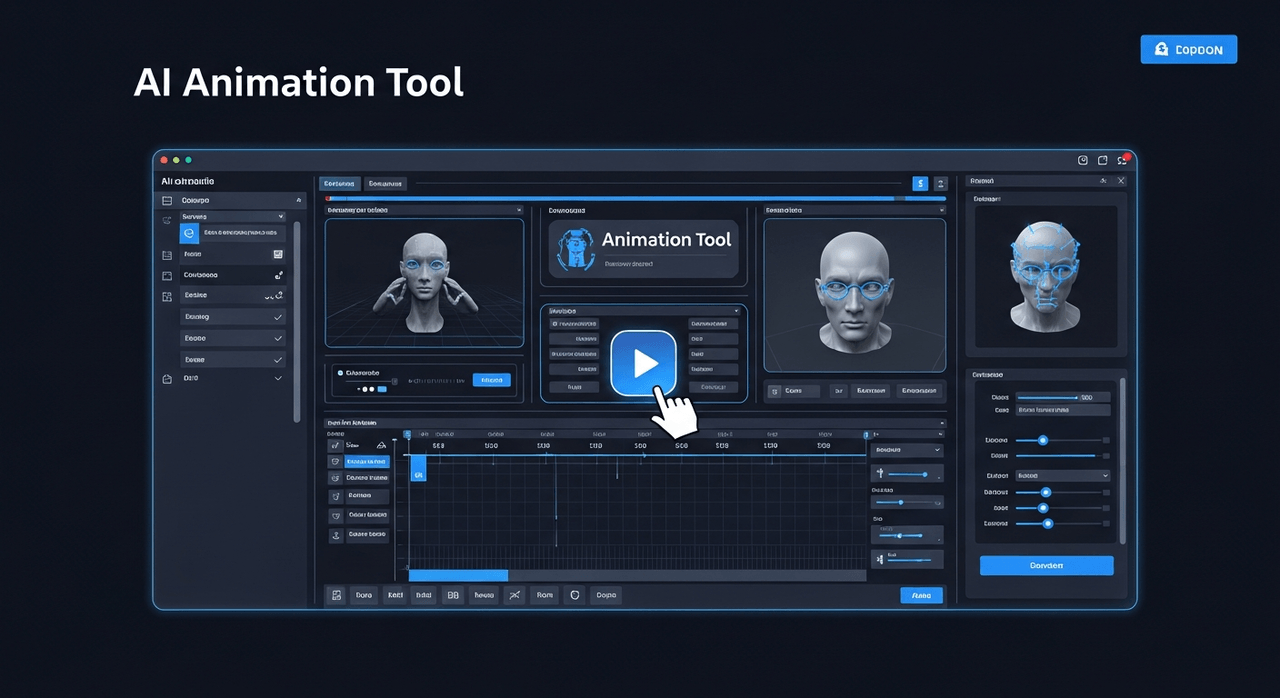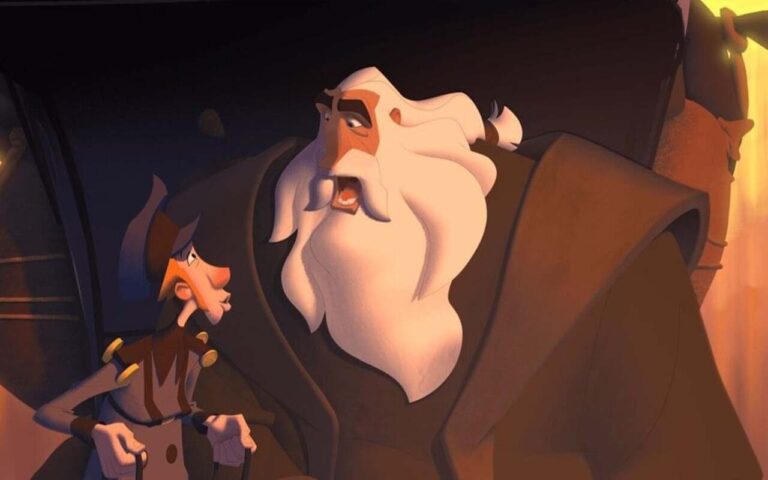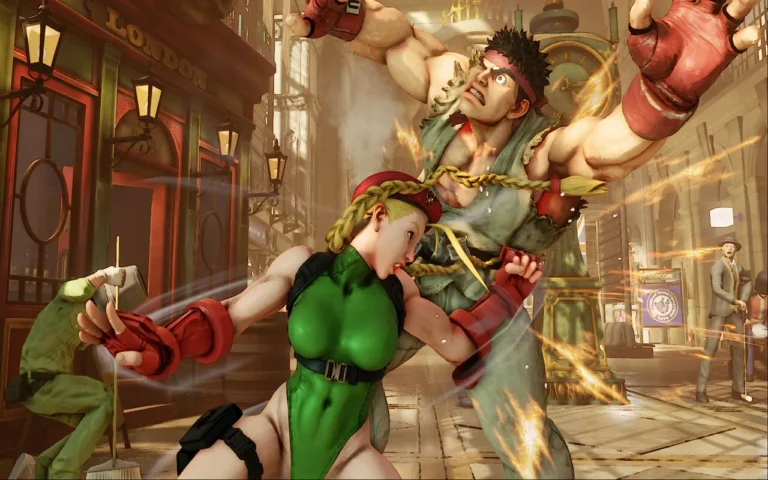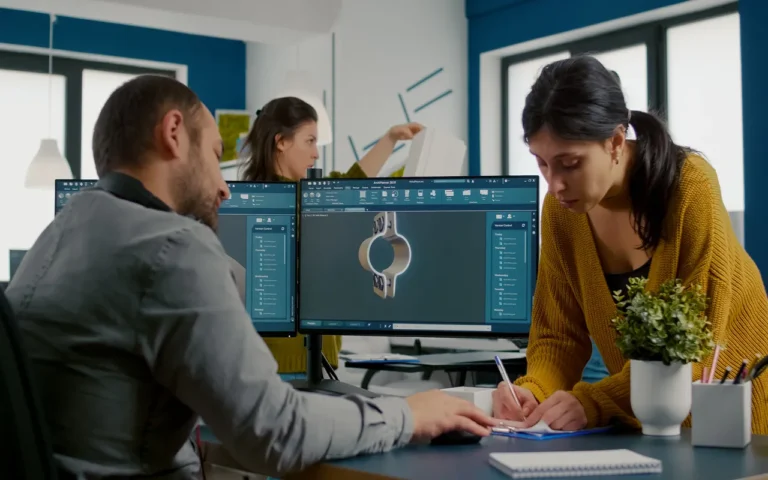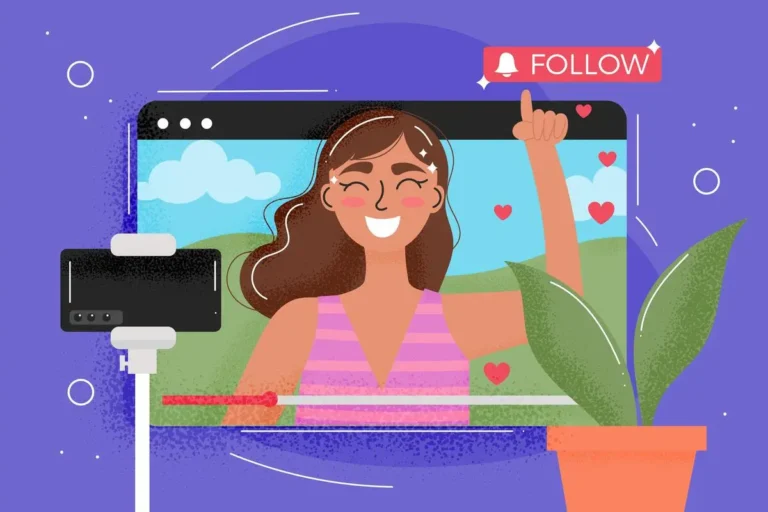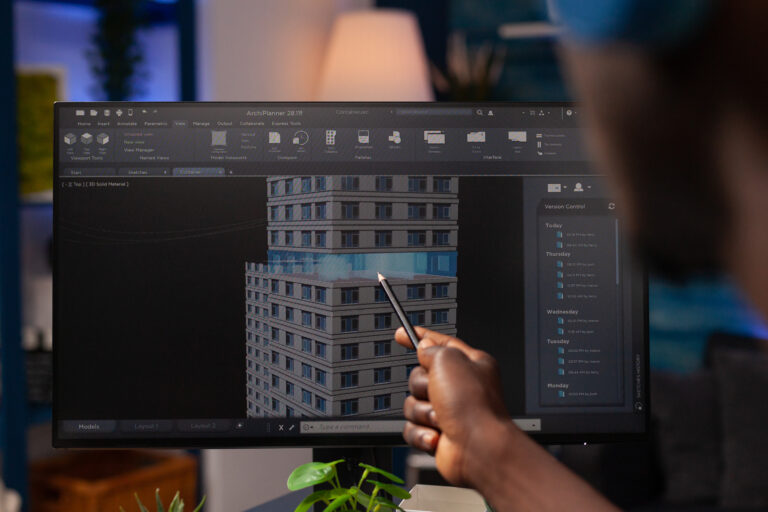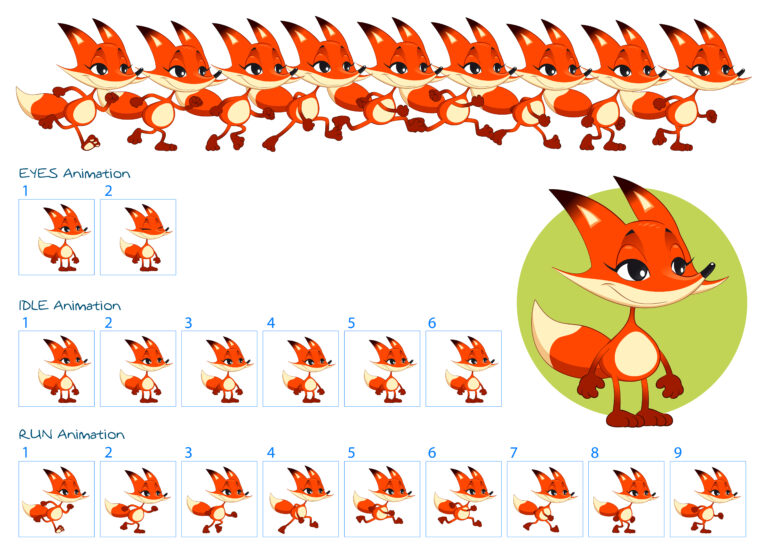Animation services used to be this super pricey thing that only giant studios could do. Well, that’s not a thing now! AI just flipped the whole game while we were sleeping!
Last year, setting up a fancy animated video cost about 15,000 dollars and took forever! What about today? A kid with a laptop can create the same animations in just 2 hours for less than 50 bucks. How wild is that? No joke, that’s really what’s going on right now.
Also, the crazy thing is how quickly this change zoomed in on us! No one expected it to happen so fast!

Need Animation Services?
Visit our Animation Service page to see how we can help bring your ideas to life!
The AMAZING Ways AI is Making Animation Better (You’ll Be Shocked!)
Here are some specific ways that AI in animation is changing everything:
1. Lightning-Fast Production (From Months to Minutes!)
What used to take animation teams 6 months now only takes 2 months.
Now, tools like Adobe Firefly and Runway ML are doing most of the work. These tools take care of all the boring stuff that no one wants to do, like moving frames.
- SuperAGI said that production time was cut by 30%.
- Netflix cuts pre-production by half by using AI storyboards.
- Small studios now make movies that are as good as Disney’s.
It even gets better. Do you remember when it took weeks to get a single scene just right? Now, creators upload their rough footage, and AI makes it look better overnight. Crazy, right?
2. Motion Capture Without the Strange Suits
Forget about those suits that made actors look like they were from a sci-fi movie. AI just threw all that expensive stuff in the trash.
Your regular smartphone camera is now a professional motion capture studio. DeepMotion and Move.ai can now follow up to 8 people in any video.
- No tools needed: With any camera, just point and shoot.
- Accuracy level: 97% mouth synchronization (that’s really good!)
- Cool factor: Make a 20-year-old picture look perfect by adding animation.
3. Faces That Really Show How People Feel
This one is really amazing. AI can now read facial expressions better than your best friend can tell how you feel.
For example, real-time tracking of 104 facial feature points is possible with systems like Adobe Character Animator. That’s more exact than what most people can see!
- It captures everything, like eyebrow movements and pupil dilation.
- AI knows how to read people’s faces to figure out what they’re feeling.
- The camera on your laptop can animate your face like in Hollywood movies.
CanonSwap’s facial animation system can turn old pictures into videos that look like they were taken with a modern 4K camera.
4. Self-Portraying Backgrounds
Background artists used to spend months making every single background element! Those days are officially over since you can make whole worlds with procedural AI generators while you get your coffee.
Toei Animation, the studio behind Dragon Ball, uses AI for background scenes so that artists can concentrate on the fun character stuff.
- It only takes a few minutes to get ready for complex environments, not weeks.
- Every background fits your artistic vision perfectly.
- More time for telling stories, less time for looking at things.
Big studios now use AI to make props, landscapes, and even whole cities just by writing down simple descriptions.
5. Finally, Lip-Sync That Works!
You know that weird feeling when animated characters look like they’re talking underwater? AI killed that problem for good.
Automatic lip-sync now works with speech patterns in more than one language. For example, Animaker AI and Character Animator get this right. What you get is:
- Upload audio and get perfect sync: No more hours of manual tweaking
- Support for more than one language: It also works with different accents and ways of speaking
- Professional quality: Independent creators get results that are as good as Pixar’s
The difference is like night and day. Before AI, it took a lot of skill and expensive software to get good lip-sync. Now? Upload your audio file, and voila, your mouth moves perfectly.
6. Setting Up Characters Without Crying
Character rigging used to be the most boring part of animation. Like, really boring stuff that no one liked.
But in this AI world, 85% of routine rigging tasks can be done automatically with modern tools. That’s a lot of time saved, since rigging really took up weeks of work time.
- Old way: Manually setting up bones and controls for weeks
- AI way: Upload a character, and in a few hours, you’ll have a fully and correctly rigged model.
- Bonus: AI knows more about anatomy than most technical artists.
Mixamo and Auto-Rig Pro are two tools that now take care of all the technical setup on their own. So, instead of fighting with bone structures, artists can focus on making characters move naturally.
7. Completely Natural Physics For Perfect Sense
AI figured out the physics code, so hair bounces naturally, clothes flow realistically, and water splashes correctly.
Even better is that AI systems add lifelike secondary movements naturally. Add in squash and stretch in those animations, and each impact or motion feels more alive! Hair goes all crazy in the wind, clothes get all crinkly when people sit down, and drinks act like real drinks.
- Smart simulation: AI can guess how different materials will act.
- Saves time: Days of changing physics now happen in an instant.
8. Style Transformation With AI
Do you want your animation to look like it came from Studio Ghibli? What about Van Gogh? Or maybe your favorite comic book? AI uses style transfer technology to make it happen.
RunwayML and Neural Frames are two tools that are at the forefront of this revolution. They can:
- Change any animation style to any other style
- Every frame fits perfectly with the others.
9. Very Fast Rendering
Real-time neural rendering shows changes right away. You won’t have to take coffee breaks while you wait for renders to finish.
- See updates to the animation right away
- Make changes without losing your momentum.
- Review and iterate together in real-time.
AI-based render engines like those in Blender and Maya now cut rendering times from hours to minutes while actually improving lighting and texture quality.
Read More: Real-Time Rendering in Animation: Why Is UE5 a Game-Changer?
10. Voice Commands In Animations
This seems like something out of a science fiction movie, but it’s real. Tell AI what you want, and it will make the animation.
Now, AI uses voice commands and scripts to make animated scenes. OpenAI’s Sora (when it comes out) and Google’s newest AI models are pushing this limit.
- Tell your story and watch it come to life.
- Upload text and get a rough animated version.
- Storytelling without any technical problems
But Hold Up… Where AI Falls Short (The Not-So-Pretty Truth)
Okay, let’s be honest for a second. AI animation is really cool, but it’s not perfect. There are still disadvantages that make you go “ugh, seriously?” in 2025.
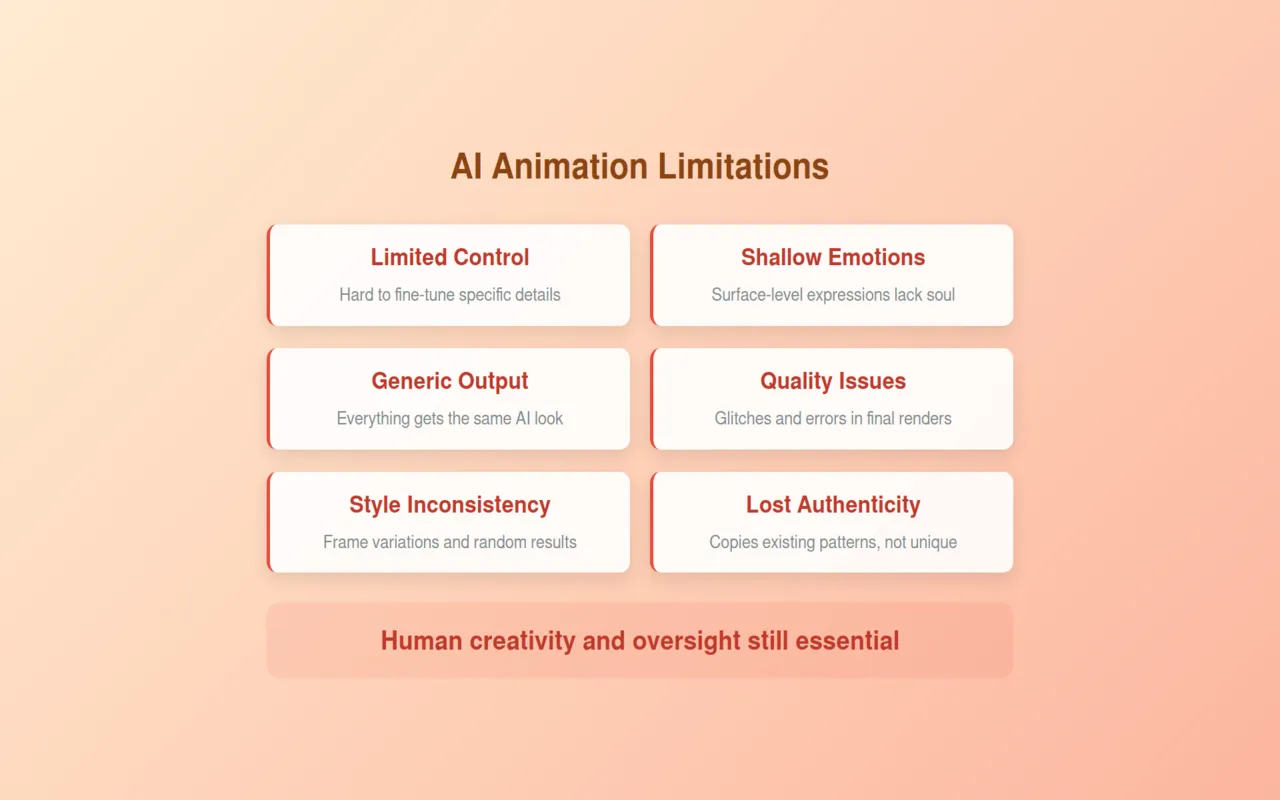
Creative Control? More Like Creative Chaos
AI tools are getting smarter, but they can still act on their own at times. You might ask for a soft smile when you use something like Steve AI or RunwayML, but you might get a creepy grin instead.
The most annoying part is that it isn’t always easy to fix. With traditional animation software, you can control every pixel. But with AI, you often have to “take it or leave it.”
- Fine-tuning is limited: Can’t change the one eyebrow that looks funny
- Problems with style consistency: Frame 1 looks great, but frame 50 looks very different.
- Random results: The same prompt can lead to very different results.
This is especially annoying for animators who have been doing it for a long time. One G2 reviewer said that Steve AI’s automation makes it “hard to fine-tune every detail.”
The Emotion Problem Nobody Talks About
AI still has trouble with real emotional depth. It can copy facial expressions perfectly, but can it really capture the character’s soul? That’s when things start to get hard.
Don’t forget how Hayao Miyazaki felt when he saw AI animation in 2016? He said it was “devastating to life itself.” AI has come a long way since then, but the main problem is still there.
- Surface-level expressions: It looks right, but it feels empty in some way.
- Not enough subtlety: Can’t catch those little micro-expressions that make people seem real
- Emotional timing: Gets the expression right, but doesn’t show it at the right time
Brand Authenticity Goes Away
Unfortunately, AI could make your Disney-style project look like everyone else’s.
AI models learn from already-existing content, which makes everything start to look the same after a while.
- Generic output: Everything seems to have the “AI look.”
- Lost uniqueness: It’s hard to find your own style when AI smooths out the rough edges.
- Bias in training data: AI copies what it’s seen before, not what you want it to do.
Top animation studios are learning that AI can speed up production, but they still need people to keep an eye on things so that their unique artistic voice stays the same.
Quality Control Nightmares
This one is very important. AI can make great things, but it can also make terrible things that you might not notice until it’s too late.
Well, in fact, AI-assisted work can have more mistakes than traditional methods. In animation, this means strange glitches, lighting that doesn’t match up, or characters that suddenly grow extra fingers.
- Problems that only show up in final renders
- A single error is replicated across hundreds of frames.
- What looks good in the preview might not work in the real world.
Generally, professional studios now take more time to check AI-generated content frame by frame.
The Great Debate – AI vs Human Animators
Let’s set this straight once and for all. There is a lot of disagreement about whether AI will replace artists or whether humans will always be the best at what they do.
The truth is that both sides have very strong weapons.
| Round | AI Animators | Human Animators | Winner |
| Speed | 30 minutes for explainer video | 2 weeks for the same project | AI |
| Cost | One-time software fee | Salaries + benefits ongoing | AI |
| Consistency | Perfect every time | Depends on mood/day | AI |
| Emotional Depth | Surface-level expressions | Deep emotional storytelling | Human |
| Creativity | Follows learned patterns | Creates new approaches | Human |
| Cultural Nuance | Generic global appeal | Culturally specific insights | Human |
| Problem Solving | Algorithmic solutions | Out-of-the-box thinking | Human |
| Learning Curve | Requires prompt engineering | Years of art training | AI |
| Scalability | Infinite scaling possible | Limited by team size | AI |
| Artistic Vision | Mimics existing styles | Develops a unique voice | Human |
Where Human Animators Still Rule the Game
Humans aren’t going down without a fight now. AI still can’t do some of the things it can do.
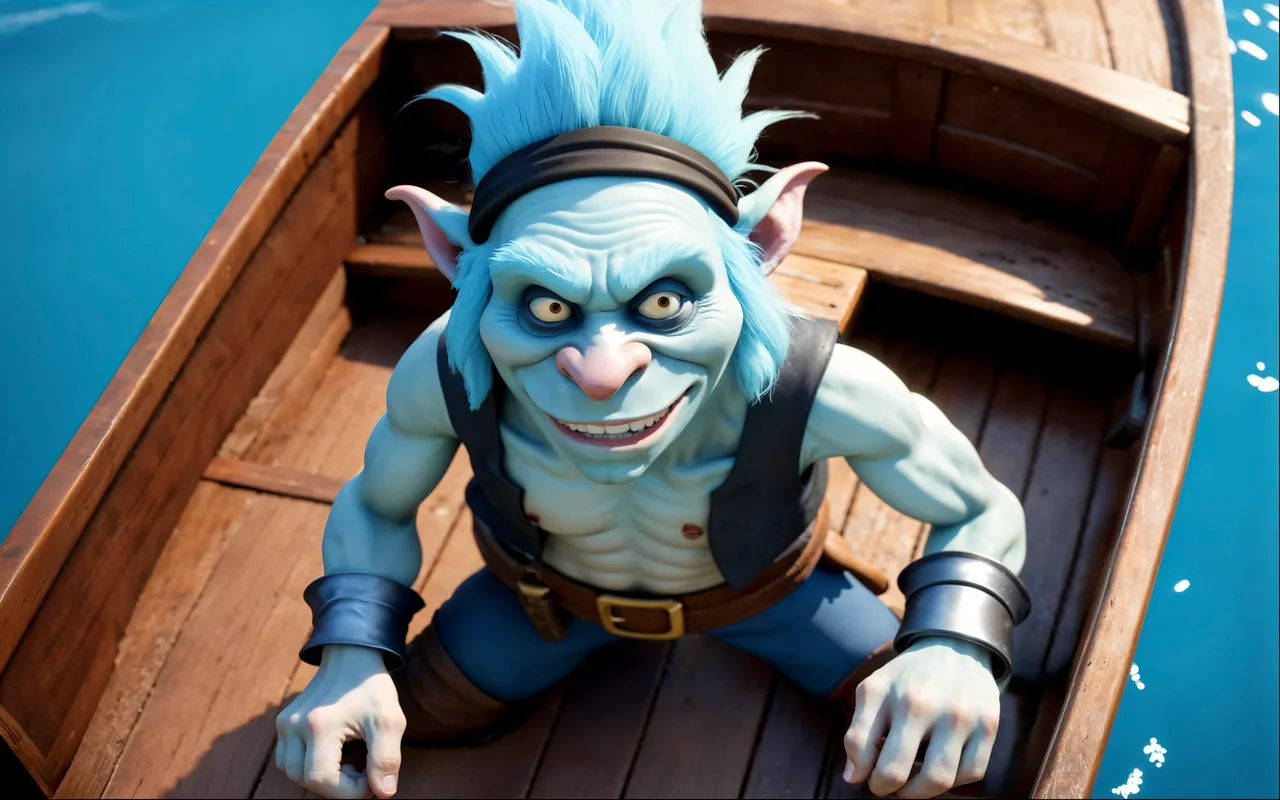
When was the last time an animated movie made you cry? That wasn’t luck; it was human storytellers who really understand how people feel. For example, in Pixar’s “Inside Out,” Joy’s smile fades a little when she realizes that Sadness is important.
Also, humans can be rebels, too. When the usual methods don’t work, they get rid of the rules. The hand-drawn rain effects from Studio Ghibli break every rule for animation, but they make magic happen.
- Cultural understanding: Knows what works for different groups of people
- Creative problem-solving: “What if we did this crazy thing?”
- Emotional intelligence: Helps characters change and grow over the course of a story.
AI Animation Tools List
Choose the one that fits your style because each one is good at different things.
| Tool Name | What It Does Best | Cool Features |
| Animaker AI | Quick business videos | Easy drag-and-drop, 2000+ voices, team sharing |
| DeepMotion | Character movement | Records your moves, no special equipment |
| Adobe Character Animator | Live face animation | Your expressions control characters instantly |
| RunwayML | Creative experiments | Text creates video, crazy style effects |
| Move.ai | Pro-level projects | Tracks multiple people, super accurate |
| Krikey AI | Fun character stuff | Text becomes 3D animation, mobile-friendly |
| VideoScribe | Educational videos | Hand-drawn whiteboard look, simple workflow |
| Appy Pie Animation | Total beginners | Pre-made templates, zero learning curve |
| Neural Frames | Artistic projects | Unique visual styles, high-quality output |
| Steve AI | Marketing content | Script becomes a video automatically |
Are you new to this? Begin with Appy Pie or Animaker AI. They were made for people who don’t know anything about animation.
Getting more serious? DeepMotion and Move.ai give you the accuracy you need for work projects.
Do you like to try new things? With RunwayML and Neural Frames, you can try things that were impossible just a year ago.
Don’t just use one tool; that’s a smart move, and try to put them together in different ways. You could use DeepMotion to animate characters and then use Adobe to make everything look better.
What AI Animation Means for YOU (Whether You’re a Creator or Just Curious)
What does all of this mean for you? It depends on what you like, though.
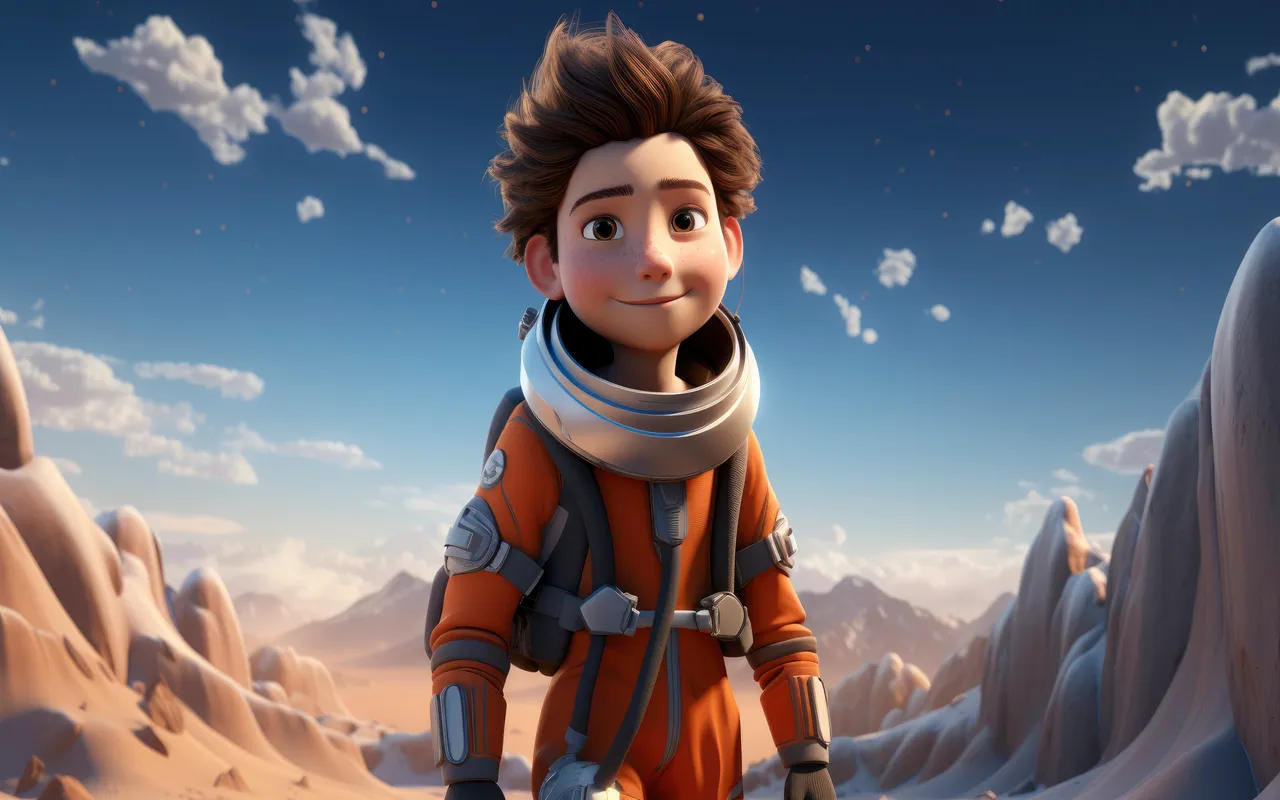
You might have always wanted to make cool videos, but thought it would be too hard. But not any longer, because those who aren’t famous are making great content that looks like it came from a big studio.
There are no more creative barriers: you don’t need to go to art school or get a lot of degrees.
- The problem isn’t money: things that used to cost thousands of dollars now cost very little.
- Time goes down a lot: what used to take months now takes days.
- Everyone is playing: People of all ages are making content, from kids to grandparents.
This still matters to you, even if you don’t plan to animate anything. Your feeds on social media are going to get a lot more interesting, and brands will tell more interesting stories.
The Future is Coming (And It Looks INCREDIBLE!)
Soon, you’ll be able to talk to your computer and see your ideas come to life. This is what OpenAI is doing with its Sora project. Meanwhile, Google is making technology that is similar, and there is definitely a race going on.
But that’s just the start. Netflix is already testing shows and movies that change based on who is watching them. For example, kids see brighter colors, and adults get more complicated stories, all without having to do anything.
The most exciting part? AI that really understands your creative vision. Not only following orders, but also figuring out what you want to do and helping you get there faster.
- Voice turns into video: Tell us about your scene and then watch it happen.
- Smart changes: One animation works perfectly on all devices.
- Touching things: Content changes based on what each viewer likes
- Creative teamwork: AI partners that really get art
The future isn’t about taking away human creativity. It’s about giving everyone superpowers so they can better share their thoughts.
